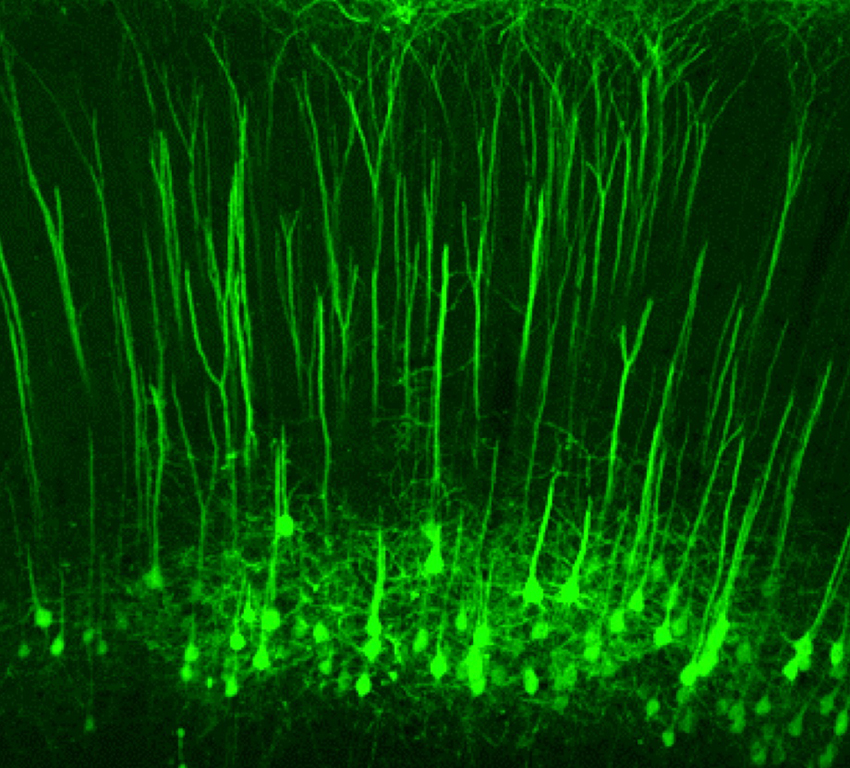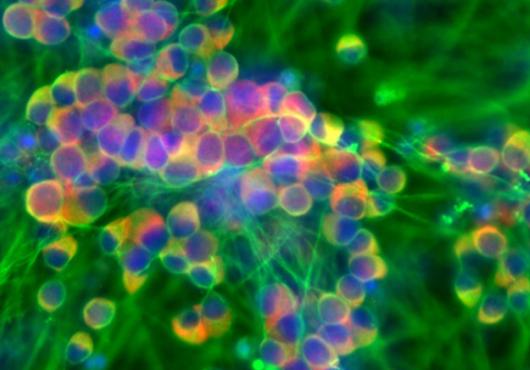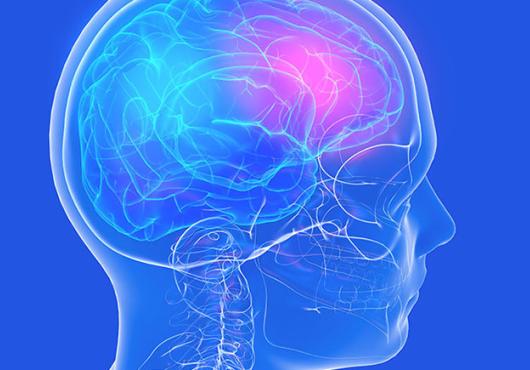
Neuropathic pain is a hard-to-treat chronic pain condition caused by nervous system damage. For people affected, the lightest touch can be intensely painful.
A study published online Sept. 12 in Nature may open up a new angle on treatment and could help explain why mind-body techniques can sometimes help people manage their pain.
“We know that mental activities of the higher brain—cognition, memory, fear, anxiety—can cause you to feel more or less pain,” said Clifford Woolf, professor of neurology and neurobiology at Harvard Medical School and director of the F.M. Kirby Neurobiology Center at Boston Children’s Hospital. “Now we’ve confirmed a physiological pathway that may be responsible for the extent of the pain.”
“We have identified a volume control in the brain for pain,” he said. “Now we need to learn how to switch it off.”
The study demonstrates that a small group of neurons that originate in the brain’s somatosensory cortex can influence sensitivity to touch and, in a neuropathic pain model, amplify pain sensation. These cortical neurons send projections to the spinal cord’s dorsal horns, which receive touch information from the body.
“The anatomy of this circuit has been known for some time,” said Zhigang He, HMS professor of neurology at Boston Children’s and co-senior author on the paper with Woolf and with Kuan Hong Wang of the National Institute of Mental Health. “But no one actually looked at its function before.”
Influencing pain volume from above
Woolf, He and colleagues combined a mouse model of neuropathic pain with recently developed technologies to visualize and target specific groups of neurons in the brain and spinal cord. This enabled them to observe which circuits were activated when mice were exposed to noxious or innocuous stimuli, and then watch the results when different neurons were activated or silenced.
They saw that nerve fibers bringing information about touch activate a relay or interneuron in the dorsal horn. The pathway then continues to the brain, activating so-called S1 neurons in the somatosensory cortex. These neurons go to the spinal cord and talk to the same interneuron. This feedback amplifies the touch signal.
The researchers found that in people (or mice) with neuropathic pain, nerve damage causes the amplified touch signal to be perceived as pain.
“In normal conditions, the touch and pain layers of the spinal cord are strongly separated by inhibitory neurons,” explained Alban Latremoliere, a former postdoctoral researcher in the Woolf lab and one of four co-first authors on the paper. “After nerve injury, this inhibition is lost, leading to touch information activating pain neurons. When the spinal neurons that are supposed to be pain-only send this information to the brain, we feel pain.”
Dialing down neuropathic pain?
The investigators think the S1 cortical neurons could be targeted to treat the tactile component of neuropathic pain, via drugs or possibly brain electrical stimulation. The goal would be to break the feedback loop that introduces and exaggerates the pain response to normally non-painful touch.
When the team severed the S1 neurons or silenced them genetically in the mouse model, the mice stopped recoiling from light, innocuous touches, yet they retained their sensitivity to truly painful stimuli, reflexively withdrawing their paws when exposed to heat, cold or pinpricks.
He suggests that electrostimulation might be a way to modulate these circuits. Clinicians have tried brain electrostimulation to treat neuropathic pain, but not always successfully.
“Our findings might help us target the stimulation to particular areas or groups of neurons,” He said. “It might be interesting to look at the clinical data and try to replicate the stimulation in animals and see what kind of stimulation would silence these neurons.”
With functional imaging technologies, investigators could probe what kinds of interventions maximally inhibit this circuit, added Woolf.
“We now have the ability to silence or activate whole groups of neurons and image their patterns of electrical firing with single-neuron resolution,” he said. “None of this was possible 10 years ago.”
Yuanyuan Liu, Latremoliere and Zicong Zhang of HMS and Boston Children’s and Xinjian Li of NIMH were co-first authors on the paper. Latremoliere is now at Johns Hopkins Medical School.
The study was supported by the Craig Neilsen Foundation, the Paralyzed Veterans of America Foundation, the Dr. Miriam and Sheldon G. Adelson Medical Research Foundation, the National Institute for Neurological Disorders and Stroke, the National Institute of Mental Health (ZIA MH002897) and the Boston Children’s Hospital Intellectual and Developmental Disabilities Research Center (NIH P30 HD018655, P30EY012196).
Adapted from a post on Vector, the Boston Children’s research and clinical innovation blog.





